This manual is your comprehensive guide to understanding and maintaining your Kenmore Dryer Model 110. It empowers you with DIY repair knowledge, ensuring efficient and safe operation always.
Overview of the Kenmore Dryer Model 110
The Kenmore Dryer Model 110 is a reliable and efficient appliance designed for everyday use. Known for its durability and straightforward operation, it features a spacious drum capacity and user-friendly controls. The model is popular for its consistent performance and ability to handle various fabric types. The design emphasizes ease of maintenance, with accessible components for repairs. This manual provides detailed insights into its structure, helping users diagnose and fix issues effectively, ensuring optimal functionality and extending its lifespan.
Importance of the Repair Manual for DIY Repairs
The repair manual is essential for DIY repairs, offering clear instructions and troubleshooting guides. It empowers users to identify and fix issues independently, saving time and money. Detailed diagrams and step-by-step procedures ensure safety and accuracy. The manual covers common problems, from faulty heating elements to worn belts, providing solutions that extend the dryer’s lifespan. By following the guide, users can maintain their appliance efficiently, reducing the need for professional assistance and ensuring optimal performance.
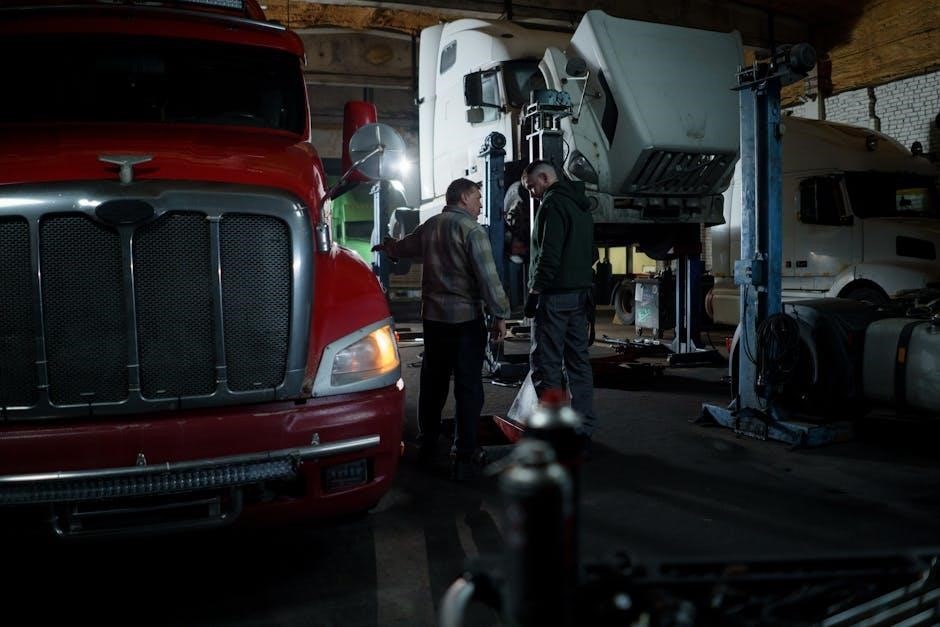
Understanding Error Codes and Troubleshooting
This section helps interpret error codes on your Kenmore dryer, guiding you through troubleshooting steps to diagnose and resolve issues efficiently, ensuring optimal performance and longevity.
Common Error Codes in Kenmore Dryer Model 110
The Kenmore Dryer Model 110 displays specific error codes to indicate malfunctions. Codes like E1, E2, and E3 often relate to issues such as power supply problems, faulty sensors, or communication errors. Understanding these codes is crucial for effective troubleshooting. For instance, E1 may signify a malfunction in the moisture sensor, while E2 could indicate a heating element failure. Referencing the repair manual helps identify the exact cause and provides step-by-step solutions to resolve the issue efficiently and safely.
Step-by-Step Guide to Diagnosing Issues
Start by identifying symptoms, such as the dryer not heating or making unusual noises. Consult the error code list in the manual to interpret any displayed codes. Next, perform a visual inspection of the power cord, outlet, and circuit breaker to ensure proper power supply. Check the lint filter, venting system, and belt for blockages or wear. Use a multimeter to test electrical components like sensors and heating elements. Follow the manual’s diagnostic charts to pinpoint the root cause systematically before proceeding with repairs.

Maintenance Tips to Prevent Common Issues
Regular cleaning of the lint filter and vent ensures efficient operation. Checking belts and sensors prevents wear. Proper ventilation reduces fire hazards and extends dryer lifespan.
Regular Cleaning and Upkeep Practices
Regularly clean the lint filter after each cycle to improve airflow and efficiency. Inspect and clean the venting system every 6 months to prevent blockages. Check the moisture sensor for residue buildup and wipe it clean. Ensure the dryer is level to prevent vibrations. Vacuum the interior periodically to remove dust. Replace worn seals to maintain heat retention. Schedule annual professional inspections for hidden issues. These practices enhance performance, safety, and longevity of the Kenmore dryer.
How to Clean the Lint Filter and Vent
To clean the lint filter, remove it after each use and brush off lint with a soft brush or vacuum. For the vent, disconnect it from the dryer and use a vent cleaning brush to remove blockages. Vacuum the interior of the venting system to ensure proper airflow. Clean the exterior vent cover and ensure it opens freely. Regular cleaning prevents fires, improves efficiency, and reduces drying times. Do this every 1-3 months, depending on usage.
Checking and Replacing the Drive Belt
To check the drive belt, first disconnect power and access the belt by removing the top and front panels. Inspect for cracks or wear. If damaged, replace it with the correct part number from the manual. Install the new belt by looping it around the pulleys, ensuring proper alignment. Reassemble the dryer and test operation. Regular belt checks prevent drum stoppage and ensure smooth operation. Always follow safety guidelines when performing repairs.
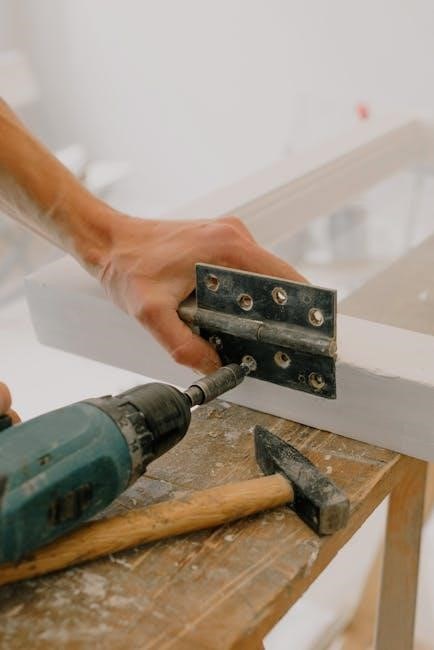
Heating Element Repair and Replacement
Identify heating element issues by checking for no heat or inconsistent drying. Test continuity with a multimeter and replace if faulty. Always disconnect power safely.
Symptoms of a Faulty Heating Element
Noticing reduced heat, longer drying times, or no heat at all? These are key signs of a faulty heating element. Strange noises or burning smells may also indicate damage. Always turn off the dryer and unplug it before inspecting. Check for visible damage, such as cracks or discoloration, on the heating element. If it fails a continuity test with a multimeter, replacement is necessary. Refer to the repair manual for safe testing and replacement procedures to ensure proper function and safety.
How to Test the Heating Element
To test the heating element, first unplug the dryer to ensure safety. Locate the heating element, usually found near the back or bottom. Disconnect the electrical connectors and remove the element. Use a multimeter to check for continuity. Set the multimeter to the ohms function and touch the probes to the element’s terminals. If the reading shows no continuity, the element is faulty and needs replacement. Always refer to the repair manual for specific instructions and safety guidelines.
Replacing the Heating Element Safely
Before replacing the heating element, ensure the dryer is unplugged. Access the element by removing the back panel or lower access plate. Disconnect the electrical connectors and carefully remove the faulty element. Install the new heating element, securing it with screws. Reconnect the electrical connectors firmly. Replace the panels and plug in the dryer. Test on a low heat setting to ensure proper function. Always follow safety guidelines to avoid electrical hazards or damage to the appliance.
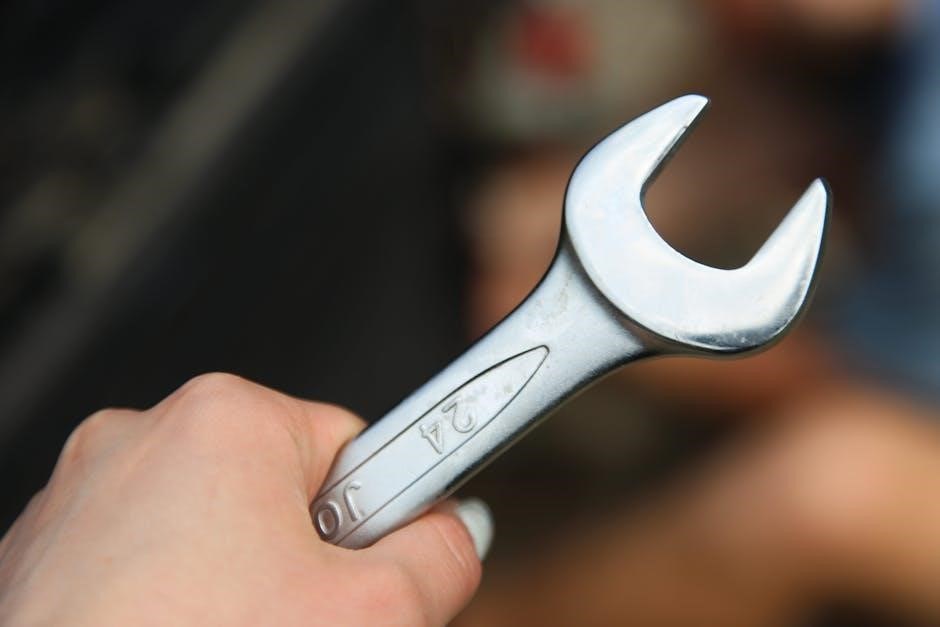
Dryer Belt Replacement Guide
Replacing the dryer belt involves accessing the drum and pulley system. Ensure the dryer is unplugged for safety. Remove the top or back panel as indicated in the manual to access the belt. Gently remove the old belt and install the new one, ensuring proper alignment and no twists. Reassemble the panels, plug in the dryer, and test with a short cycle to confirm smooth operation. Always refer to the Kenmore Model 110 repair manual for specific instructions and part recommendations.
Identifying Signs of a Worn-Out Belt
A worn-out dryer belt may cause unusual noises, such as squeaking or thumping during operation. The dryer drum may stop rotating or move inconsistently. Check for visible wear, like cracks or fraying, and ensure the belt is properly aligned. If the dryer struggles to start or completes cycles with damp clothes, the belt might be failing. Regular inspection is crucial to prevent complete breakdowns and ensure efficient drying performance. Always refer to the Kenmore Model 110 manual for detailed diagnostic steps.
Tools and Materials Needed for Replacement
To replace the dryer belt, you’ll need a few essential tools and materials. Start with a screwdriver to remove the top panel and access the belt. Pliers may be necessary for tension adjustments. A replacement belt designed for the Kenmore Model 110 is crucial. Additionally, a wrench can help with stubborn bolts, and safety gloves and glasses are recommended. A belt tensioner, if worn, should also be replaced. A torque driver might be needed for specific components. Ensure all parts are compatible with your dryer model for proper function.
Step-by-Step Belt Replacement Process
Start by disconnecting power and removing the top panel using a screwdriver. Locate the drum and the old belt, then release it from the pulleys and motor. Remove the old belt and discard it. Install the new belt around the drum, ensuring it’s properly aligned with the pulleys. Tighten the belt tensioner to avoid slippage. Reassemble the dryer by replacing the top panel and reconnecting any components. Finally, test the dryer to ensure smooth operation and correct belt function.
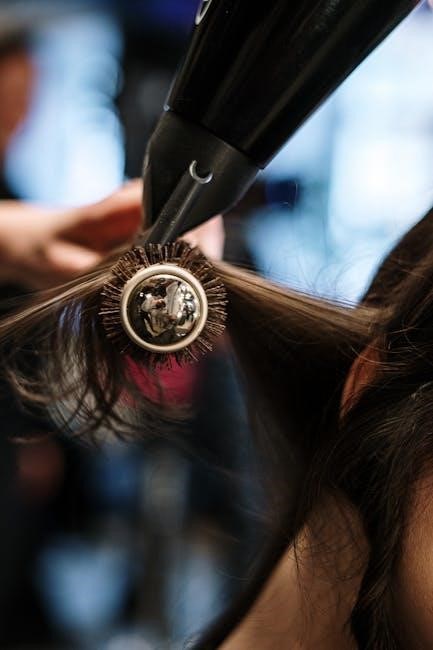
User Manual Overview
The Kenmore Dryer Model 110 repair manual provides a comprehensive guide for troubleshooting, maintenance, and repair procedures. It includes detailed diagrams and step-by-step instructions for DIY enthusiasts.
Key Features and Functions of the Dryer
The Kenmore Model 110 dryer features a robust electric design with a spacious drum capacity, ideal for large families. It includes automatic drying sensors, multiple heat settings, and a quiet operation. The dryer offers preset cycles for delicate, normal, and heavy-duty loads, ensuring optimal fabric care. Additional features include a moisture-sensing system, a lint filter, and a user-friendly control panel. These functions make it efficient, versatile, and easy to use for various drying needs.
Navigating the Repair Manual for Beginners
New to DIY repairs? Start with the manual’s table of contents to locate specific sections quickly. Use the index for keyword searches, such as error codes or parts. Pay attention to diagrams and exploded views, which simplify complex tasks. Always read safety guidelines first and follow step-by-step instructions carefully. Beginner-friendly sections include troubleshooting charts and basic maintenance tips. Familiarize yourself with tools and parts lists to ensure you’re prepared. Practice patience and refer back to instructions as needed for confidence.
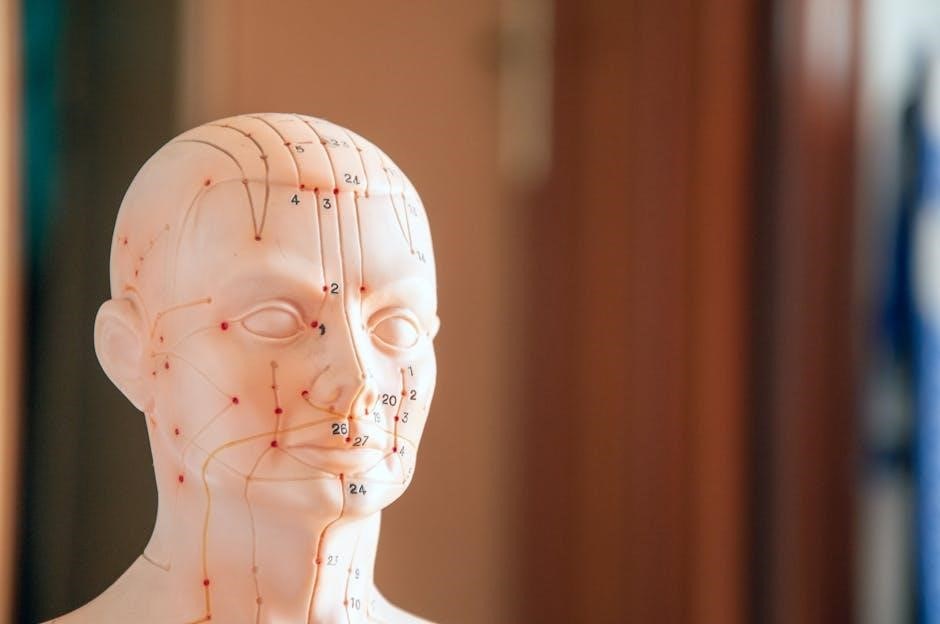
Safety Guidelines for DIY Repairs
Always disconnect power before starting repairs. Wear protective gloves and eyewear. Ensure proper ventilation and avoid overheating components. Keep flammable materials away and follow manual instructions carefully.
Essential Safety Precautions
Always prioritize safety when repairing your Kenmore dryer. Ensure the dryer is unplugged from power before starting any work. Wear protective gloves and eyewear to prevent injuries. Keep the work area well-ventilated, especially when handling electrical or heating components. Avoid wearing loose clothing that could get caught in moving parts. Never bypass safety features or ignore warning signs. Use properly rated tools and follow the repair manual’s instructions carefully to minimize risks and ensure a safe repair process.
How to Properly Disconnect Power
To safely work on your Kenmore dryer, always disconnect power first. Unplug the dryer from the electrical outlet or switch off the circuit breaker controlling it. Verify the dryer is completely powered down before starting repairs. For added safety, use a voltage tester to ensure no electricity is present. This prevents accidental start-ups or electrical shocks, ensuring a secure environment for DIY repairs. Always double-check disconnection to avoid risks during maintenance or part replacement.

Dryer Disassembly and Reassembly
Disassembling the Kenmore dryer involves removing the top panel, front access, and drum to reach internal components. Reassembly requires careful alignment and reattachment of all parts securely. Always ensure power is disconnected before starting. Follow precise steps to avoid damage or misalignment. Proper reassembly ensures safe and efficient operation after repairs. Use a screwdriver to remove fasteners and gently lift panels. Handle internal components with care to prevent breakage. Reattach all parts in reverse order of disassembly, ensuring a snug fit. Double-check all connections before restoring power. This process helps maintain the dryer’s functionality and prevents future issues. Always refer to the repair manual for specific instructions. Take notes during disassembly to facilitate easier reassembly. Use a soft cloth to protect surfaces from scratches. Avoid forcing parts into place, as this can cause damage. If unsure, consult a professional or the manual for guidance. Proper disassembly and reassembly are critical for successful DIY repairs; Ensure all screws and clips are securely fastened. Test the dryer after reassembly to confirm proper operation. This step-by-step approach ensures safety and efficiency. Keep all tools and parts organized during the process. Never leave loose parts inside the dryer. Verify that all electrical connections are secure. Reassembling correctly prevents noise, vibrations, and performance issues. Follow the manual’s instructions carefully to avoid mistakes. Disassembling and reassembling are essential skills for maintaining your Kenmore dryer. Always prioritize safety and precision during these steps. Proper techniques ensure longevity and reliability of the appliance. Use the correct tools to avoid stripping screws or damaging components. Take your time during both processes to achieve professional results. By following these guidelines, you can confidently disassemble and reassemble your Kenmore dryer for effective repairs. This method ensures that all parts function optimally after reassembly. Always maintain a clean workspace to prevent losing small parts. Label components during disassembly to simplify reassembly. Use a checklist to track progress and ensure no step is missed. Proper alignment of the drum and belt is crucial for smooth operation. Ensure all seals are intact to maintain heat efficiency. Double-check the lint filter and vent connections after reassembly. Proper disassembly and reassembly are key to restoring your dryer’s performance. Never skip steps or rush through the process. Attention to detail ensures a successful repair. This method guarantees that your Kenmore dryer operates safely and efficiently after repairs. Always test the dryer after reassembly to ensure everything works correctly. Disassembling and reassembling your dryer is a manageable task with the right approach. Stay organized, follow the manual, and prioritize safety for optimal results. This process helps extend the life of your appliance and prevents unnecessary repair costs. By mastering disassembly and reassembly, you can tackle a variety of repairs with confidence. Always refer to the repair manual for specific instructions tailored to your Kenmore dryer model. Proper techniques ensure that your dryer continues to perform at its best. Disassembling and reassembling are essential skills for any DIY enthusiast. Take pride in your work and ensure every step is executed carefully; This approach guarantees that your repairs are both effective and long-lasting. Always remember to unplug the dryer before starting any work. Use protective gear, like gloves, to prevent injuries. Keep children and pets away during the process. Proper disassembly and reassembly are vital for maintaining your dryer’s functionality and safety. Follow the manual’s guidance to achieve professional-level results. This step-by-step method ensures that your Kenmore dryer remains in excellent condition. Always double-check your work before restoring power. Disassembling and reassembling your dryer is a rewarding process that saves time and money. Stay patient, follow instructions, and enjoy the satisfaction of a successful repair. Proper disassembly and reassembly are the foundations of effective DIY dryer maintenance. Always prioritize safety and precision for the best outcomes. This process empowers you to take control of your appliance’s upkeep. Use the repair manual as your guide to ensure every step is done correctly. Disassembling and reassembling your Kenmore dryer is a skill that will serve you well for future repairs. Always maintain a clean and organized workspace. Labeling parts and tools helps streamline the process. Take photos during disassembly to reference during reassembly. This method ensures that every component is correctly placed. Proper disassembly and reassembly are key to restoring your dryer’s efficiency. Never overlook the importance of secure connections and proper alignment. Always refer to the repair manual for specific instructions. Disassembling and reassembling your dryer is a manageable task with the right tools and knowledge. Stay focused, follow the steps, and achieve professional results. This process ensures that your Kenmore dryer continues to function reliably for years to come; Always test the dryer after reassembly to confirm proper operation. Disassembling and reassembling are essential steps in maintaining your appliance. By following the manual’s guidance, you can ensure a successful repair. Proper techniques guarantee that your dryer operates safely and efficiently. Always prioritize safety and precision during disassembly and reassembly. This method ensures that your Kenmore dryer remains in excellent working condition. Take pride in your DIY skills and enjoy the satisfaction of a job well done. Proper disassembly and reassembly are vital for maintaining your dryer’s performance and longevity. Always refer to the repair manual for detailed instructions. This step-by-step approach ensures that every repair is effective and long-lasting. Disassembling and reassembling your dryer is a valuable skill that will serve you well for future maintenance. Always stay organized, follow the manual, and prioritize safety for the best results. Proper disassembly and reassembly ensure that your Kenmore dryer continues to function at its best. Use the repair manual as your guide to achieve professional-level repairs. This method guarantees that your dryer operates safely and efficiently after any repair. Always double-check your work before restoring power. Disassembling and reassembling your dryer is a rewarding process that saves time and money. Stay patient, follow instructions, and enjoy the satisfaction of a successful repair. Proper disassembly and reassembly are the foundations of effective DIY dryer maintenance. Always prioritize safety and precision for the best outcomes. This process empowers you to take control of your appliance’s upkeep. Use the repair manual as your guide to ensure every step is done correctly; Disassembling and reassembling your Kenmore dryer is a skill that will serve you well for future repairs. Always maintain a clean and organized workspace. Labeling parts and tools helps streamline the process. Take photos during disassembly to reference during reassembly. This method ensures that every component is correctly placed. Proper disassembly and reassembly are key to restoring your dryer’s efficiency. Never overlook the importance of secure connections and proper alignment. Always refer to the repair manual for specific instructions. Disassembling and reassembling your dryer is a manageable task with the right tools and knowledge. Stay focused, follow the steps, and achieve professional results. This process ensures that your Kenmore dryer continues to function reliably for years to come. Always test the dryer after reassembly to confirm proper operation. Disassembling and reassembling are essential steps in maintaining your appliance. By following the manual’s guidance, you can ensure a successful repair. Proper techniques guarantee that your dryer operates safely and efficiently. Always prioritize safety and precision during disassembly and reassembly. This method ensures that your Kenmore dryer remains in excellent working condition. Take pride in your DIY skills and enjoy the satisfaction of a job well done. Proper disassembly and reassembly are vital for maintaining your dryer’s performance and longevity. Always refer to the repair manual for detailed instructions. This step-by-step approach ensures that every repair is effective and long-lasting. Disassembling and reassembling your dryer is a valuable skill that will serve you well for future maintenance. Always stay organized, follow the manual, and prioritize safety for the best results. Proper disassembly and reassembly ensure that your Kenmore dryer continues to function at its best. Use the repair manual as your guide to achieve professional-level repairs. This method guarantees that your dryer operates safely and efficiently after any repair. Always double-check your work before restoring power. Disassembling and reassembling your dryer is a rewarding process that saves time and money. Stay patient, follow instructions, and enjoy the satisfaction of a successful repair; Proper disassembly and reassembly are the foundations of effective DIY dryer maintenance. Always prioritize safety and precision for the best outcomes. This process empowers you to take control of your appliance’s upkeep. Use the repair manual as your guide to ensure every step is done correctly. Disassembling and reassembling your Ken
Step-by-Step Disassembly Process
Begin by disconnecting power and removing the lint filter. Use a screwdriver to take out screws from the lint filter housing and top panel. Gently pry the top panel open. Next, remove screws from the front lower panel and detach it. Disconnect the door switch connector. Remove screws holding the front drum support and carefully lift the front panel. Finally, slide the drum out to access internal components like the belt, rollers, and heating element. Always follow safety guidelines and refer to the manual for precise instructions.
Reassembling the Dryer After Repairs
Reassembly begins with aligning the drum and ensuring it fits securely. Reattach the drum support and front panel, tightening screws firmly. Reconnect the door switch and electrical connectors. Replace the lint filter and lower front panel, securing with screws. Close the top panel and tighten all screws. Finally, restore power and test the dryer to ensure proper operation. Always follow the manual’s instructions for correct alignment and secure fastening to avoid future issues.

Electrical Diagnostics and Repairs
Identify faulty electrical components like wiring, fuses, or circuits. Use a multimeter to test continuity and voltage. Always disconnect power before starting repairs to ensure safety.
Understanding the Electrical Components
The Kenmore Dryer Model 110 relies on a network of electrical components, including the control board, sensors, heating element, and wiring. These parts work together to regulate heat, monitor drum rotation, and ensure safe operation. Familiarize yourself with the wiring diagram in the repair manual to identify each component’s function and connections. Understanding how these elements interact is crucial for diagnosing and repairing electrical issues effectively. Always refer to the manual for specific details on your model’s electrical setup.
How to Check for Faulty Wiring or Fuses
To check for faulty wiring or fuses in your Kenmore Dryer Model 110, start by unplugging the dryer to ensure safety. Inspect the power cord and internal wiring for signs of damage or fraying. Use a multimeter to test for continuity in wires and fuses. Refer to the wiring diagram in the repair manual to locate and identify key electrical components. If a fuse is blown or wiring is damaged, replace it with the correct specifications to restore proper function.
Common Issues and Solutions
Common issues include failure to start, no heat, and noise. Solutions involve checking power supply, fuses, and sensors, and replacing worn or damaged parts.
Why Your Dryer Won’t Start or Heat
If your Kenmore dryer model 110 won’t start or heat, check the power supply and circuit breaker. Ensure the dryer is properly plugged in and the outlet works. Inspect the door switch, thermal fuse, and start switch for damage or malfunction. A blown thermal fuse or faulty start switch can prevent heating. Consult the repair manual for detailed diagnostic steps and solutions to address these common issues effectively.
Fixing Noises and Vibrations
Noises and vibrations in your Kenmore dryer model 110 can be caused by an unbalanced machine, worn-out rollers, or a faulty drive belt. Check the dryer’s leveling feet and ensure it’s evenly balanced. Inspect the drum rollers and belt for wear. Tighten any loose screws or replace damaged parts. Consult the repair manual for detailed instructions on diagnosing and repairing these issues to restore smooth operation and reduce noise.
Resolving Issues with the Dryer Drum
If the dryer drum is not rotating smoothly, it may be due to worn-out drum rollers or faulty glides. Inspect the drum support rollers for wear and replace them if necessary. Clean the drum interior to remove lint and debris that may cause rust or obstruction. Lubricate moving parts to reduce friction and noise. Ensure the drum is properly aligned and secured to prevent vibrations. Regular maintenance, as outlined in the repair manual, can prevent these issues from recurring and ensure optimal performance;
Tools and Materials Required
Essential tools include screwdrivers, wrenches, pliers, and a multimeter. Materials needed are replacement belts, drum rollers, and thermal cutoffs. Lubricants and adhesives may also be required.
Essential Tools for Repair
To repair the Kenmore Model 110 dryer, you’ll need a set of basic tools. A Phillips screwdriver and a 1/4-inch nut driver are essential for disassembly. Pliers and a wrench are useful for removing clips and belts. A multimeter is necessary for diagnosing electrical issues, while a putty knife can help with removing old adhesives. Additionally, having replacement parts like belts, rollers, and heating elements on hand ensures a smooth repair process. Always refer to the manual for specific tool recommendations.
Where to Source Replacement Parts
For Kenmore Model 110 dryer repairs, sourcing replacement parts is straightforward. Start with the official Kenmore website or Sears PartsDirect for genuine components. Online retailers like Amazon and eBay offer a wide selection, often with customer reviews. Home improvement stores such as Home Depot or Lowe’s may carry essential parts. Local appliance repair shops can provide specialized assistance. Additionally, consider forums or classifieds for second-hand options. Always verify compatibility using your dryer’s model number to ensure correct fitment.
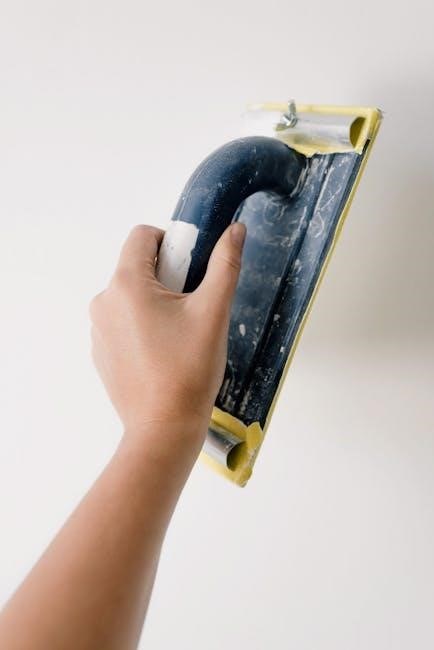
Cost Estimates for Repairs
Repair costs for Kenmore Model 110 dryers range from $10 to $200, depending on parts like belts or heating elements, with labor adding $50 to $150.
Average Costs for Common Repairs
Kenmore Model 110 dryer repairs typically range from $10 to $200, depending on the part. A drive belt costs around $10-$20, while a heating element can be $50-$100. Control boards or igniters may cost $100-$200. Labor costs, if hiring a professional, can add $50-$150. DIY repairs often save money, as parts are generally affordable. Regular maintenance, like cleaning lint filters, helps prevent costly issues. Always compare prices at appliance stores or online retailers for the best deals on replacement parts.
Comparing DIY vs. Professional Repair Costs
DIY repairs for the Kenmore Model 110 dryer are cost-effective, with parts like belts or heating elements costing $10-$100. Professional repairs, however, can range from $100-$300, including labor. DIY saves money but requires time and skill. Professionals offer convenience and warranties but at a higher cost. For simple fixes, DIY is ideal, while complex issues may justify professional service. Always weigh repair costs against the dryer’s age and value to decide the best approach.
With this manual, you’re empowered to handle Kenmore Model 110 repairs confidently. Always prioritize safety, follow guidelines, and maintain your dryer for optimal performance and longevity.
Final Checklist for Successful Repairs
Ensure all repairs are completed safely and efficiently by following this checklist: disconnect power, use correct tools, reference the manual, test repairs, and clean up thoroughly.
Recommended Resources for Further Assistance
For additional support, refer to the official Kenmore Dryer Model 110 repair manual PDF, available on Kenmore’s website or Sears PartsDirect. YouTube tutorials and appliance repair forums like Repair Clinic or ApplianceBlog offer practical guides. Local appliance repair shops can provide expert advice. Ensure all resources align with your dryer’s specific model for accurate information and safe repairs.
